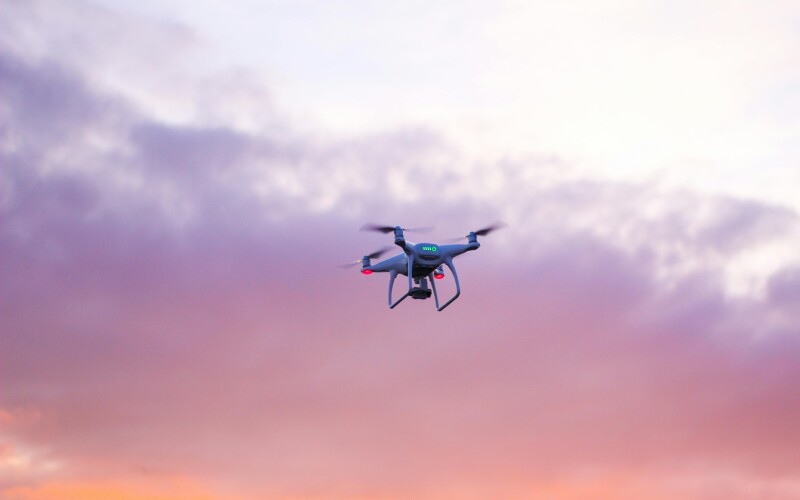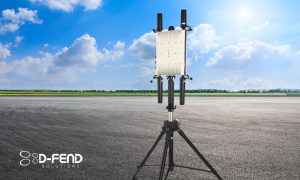Around the Commercial Drone Industry: Insights from Texas Disaster Response to Shark Safety and Illegal Fireworks
Drones are no longer limited to capturing breathtaking views or boosting social media content. Recent years have seen them evolve into vital components in disaster response, environmental preservation, public safety, and even cultural festivities—both legitimate and otherwise. Let’s explore the world of commercial drones through three vivid examples: disaster response in Texas, shark detection along coastlines, and counteracting illegal fireworks. These stories reveal how drones are pivotal in saving lives, securing beaches, and ensuring urban safety, underscoring the shared responsibility of our skies.
Texas Floods: Aerial Assistance and Airspace Safety
Facing severe flooding in central Texas, emergency units leaped into action with helicopters and ground teams, supported by a fleet of military-grade drones. Prominent among these was the MQ-9 Reaper drone, which provided real-time assessments, infrared imaging, and flood zone mapping to swiftly locate individuals needing rescue. These drones efficiently surveyed hard-to-reach areas, identifying individuals stranded on rooftops and transmitting critical data to rescue teams.
However, alongside these professional operations, many hobbyists launched their drones, often intending to aid or document the situation. Unfortunately, these efforts led to hazardous airspace congestion, posing risks during medical evacuations. Kerrville City Manager Dalton Rice emphasized:
“Personal drones flying poses a risk to aircraft operations and threatens further mission success.”
The authorities promptly established a no-fly zone for recreational drones, enforced by the FAA, emphasizing that authorized response teams should manage air operations during crises. Interruptions, however minor, could lead to dire consequences.
Key takeaway: Adhering to airspace restrictions during emergencies helps save lives. Responsible drone usage involves checking for Temporary Flight Restrictions (TFRs), which are legally binding during such crises.
Infrastructure Inspections: Texas Adopts Aerial Strategies
Apart from direct rescues, drones play a pivotal role in inspecting infrastructure post-disasters. The Railroad Commission of Texas mobilizes a dedicated statewide drone team to assess damages at sites like oil and gas facilities, post-floods or fires. These specialized drones deliver crucial aerial insights, guiding response teams and averting further industrial mishaps.
Shark Detection: Ensuring Beach Safety
Across spots like Australia and California, drones are credited for safer swimming conditions. Traditional shark spotting involved lifeguards or helicopters, limiting both cost and time. Today’s drone era has transformed this.
How Drone Shark Detection Functions
- High-resolution cameras scan waters from above, enabling lifeguards or AI systems to monitor in real-time.
- AI-enhanced analytics differentiate between sharks, dolphins, rays, or surfers.
- Upon shark detection, alerts are dispatched to authorities, lifeguards, and even directly to beachgoers.
Initiatives like SharkEye leverage drones with integrated AI, offering real-time coastal surveillance:
“Automated shark detection greatly benefits communities far beyond California.”
—Neil Nathan, Benioff Ocean Science Laboratory
The AI solutions are remarkably efficient, with some tests showing a nearly 40% improvement over human detection alone. Programs in Australia like the Drone Shark App and SharkSmart utilize similar technology to deliver real-time updates, enhancing lifeguard reaction times significantly.
Vital Statistics and Technological Advances:
- Detection efficacy: AI-powered drones significantly outperform human monitors.
- Hardware: Commonly used drones include the DJI Matrice series equipped with 4K cameras, thermal imaging, and GPS functionality.
- Cost benefits: Drone operations provide broader and more prolonged coverage inexpensively compared to helicopters.
- Ecological impact: Drones minimize marine life disturbance, reducing environmental footprints.
Expert hint: Shark-spotting drones now often carry audio alarms or life buoys for emergency response. The evolution continues with potential underwater sensor collaborations for preemptive warnings.
Cultural insight: The advent of shark-spotting drones has inspired memes like “Jaws meets DJI” and fostered a culture of safety through active social media engagement on real-time shark alerts.
Combating Illegal Fireworks: Drones in Urban Safety
Summer, synonymous with festivities, often involves fireworks. However, illegal displays are not just disturbances but significant fire risks. Law enforcement increasingly turns to drones for their unrivaled capability in monitoring and managing such dangers.
The Role of Drones in Fireworks Enforcement
- Comprehensive view: Drones can identify fireworks bursts and trace them back to their sources, even in congested cities.
- Data collection: UAVs capture video evidence crucial for law enforcement when addressing serial violators or tracking supply chains.
- Fast response: Drone footage facilitates rapid officer deployment to hotspots.
Despite their effectiveness, using drones for fireworks enforcement raises questions about privacy and surveillance. It’s crucial for such operations to be transparent and to engage community trust.
Building a Culture of Drone Responsibility
Behind every rescue or safety achievement are the teams of experts—drone pilots, AI creators, and emergency responders—collaborating closely. For commercial drone enterprises, success hinges not only on technology but on training, cooperation, and trust.
Commitment to Excellence
- Education: Pilots undergo detailed training centering on disaster, safety, and ethical standards.
- Support: Services include consulting, safety evaluations, and bespoke solutions for both public institutions and private clients.
- Success narratives: Our drones have assisted in flood rescues, shark spotting, and illegal fireworks crackdowns.
**Fun detail:** On a recent Fourth of July, our drones detected over a dozen illegal fireworks sites in two hours, successfully directing officers to spots that might have gone unnoticed by ground patrols.
Guidance for Upcoming Drone Operators
- Always verify Temporary Flight Restrictions (TFRs) before flying. Disaster zones are generally prohibited for hobby flying.
- Looking to assist during crises? Join a certified team or become a licensed drone pilot. Solo volunteering can create more issues than solutions.
- Exploring drone-enabled coastal patrol or environmental projects? Consider AI-enhanced models for progressive outcomes.
- Preserve privacy: Operate lawfully, avoid private surveillance, and liaise with local authorities if uncertain.
Future of Drones: Setting New Norms
Drones represent more than mere devices—they’re establishing new benchmarks in public safety, emergency management, and environmental stewardship. From Texas tragedies to Californian beaches and festive nights in the metropolis, drones now stand as crucial allies in life-saving missions while securing communities.
Interested in embracing the drone innovation? Whether you are a public entity, enterprise, or enthusiast, the skies await. Just ensure you fly wisely, maintain safety, and respect shared airspaces. When drones are utilized responsibly, everyone benefits.













